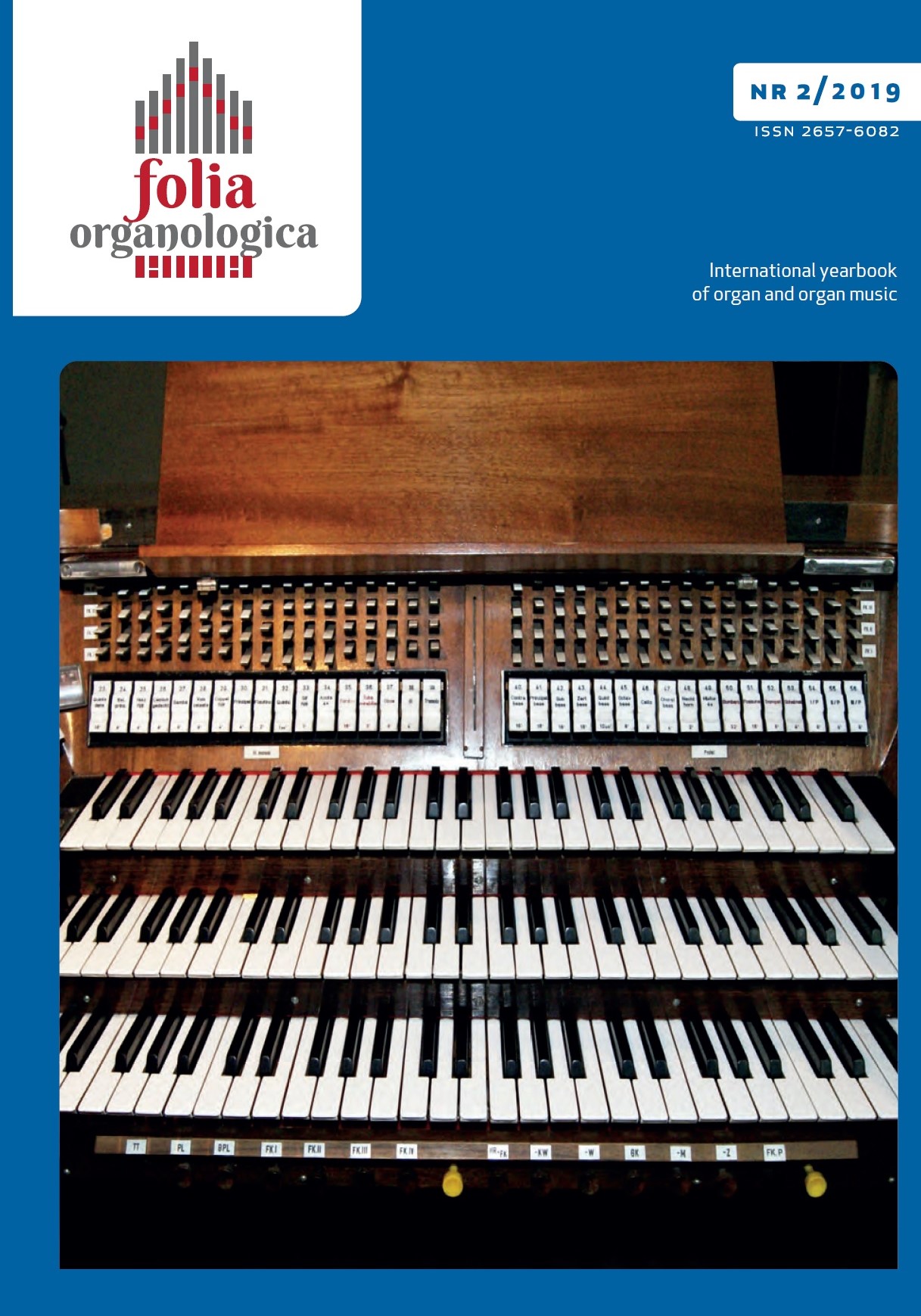Organy w utworze "Medytacje" Tomasza Kulikowskiego
Organ in the piece "Meditations" of Tomasz Kulikowski
Author(s): Karolina PawlikSubject(s): Cultural history, Music
Published by: Uniwersytet Opolski
Keywords: organ;cello;meditation;Tomasz Kulikowski
Summary/Abstract: Organ music emerging for centuries is largely intended for the solo instrument. Composers rarely use the chamber potential of the organ. It is especially interesting how it functions as a part of a larger group of instruments. A good example of such a composition are Meditations of the Wroclaw creator Tomasz Kulikowski.To clearly show the subject, this article is divided into four parts. The first describes the composer, his life and work. The next one contains the circumstances of creating the composition Meditations. The third part describes the structure of the work. Whereas the last part is devoted to the role of organ in the aforementioned composition.Tomasz Kulikowki was born in 1957 in Wrocław. He is a lecturer at the Music Academy of Karol Lipiński and an organist. Kulikowski's compositional activity includes choral, orchestral, chamber and solo music. The organ work, solo pieces and stylized choral preludes, is of particular interest.Meditations for the cello and organ is a piece created in January 2003. The work has an utilitarian character. It was not written for a specific instrument, but the composer suggested the registration in the score. The title – Meditations – implies the reflective nature of the work. The goal of meditation is to bring man into union with the deity. It occurs mainly in Hinduism, Buddhism and Christianity, and has different meanings in these respective religious systems. Due to Kulikowski's career and, above all, the role of organ in Christianity, it will be important for the work to realize the value of meditation for this religion.Meditations has a ternary form A B A'. The harmony is based on pentatonic systems and the whole-tone scale. The chords have a quarter structure. In part A, three motifs are used in different configurations, the second one, B, is figurative, whereas the last combines the features of the others.Tomasz Kulikowski entrusted organ with a variety of functions in the composition Meditations. The key to this work is the selection of instruments. That is why the colour function of the organ is the most important. The use of a limited number of basic voices makes the instrument sound more like a cello. Therefore, the imitative function is associated with the colour values. Harmonic and formal continuity determine the structural function of the organ. The symbolic meaning of this instrument directs the listener's attention towards spiritual reality, towards the Christian vision of the meditation mentioned in the title.
Journal: Folia Organologica. International yearbook of organ and organ music
- Issue Year: 2019
- Issue No: 2
- Page Range: 103-113
- Page Count: 11
- Language: English, Polish

